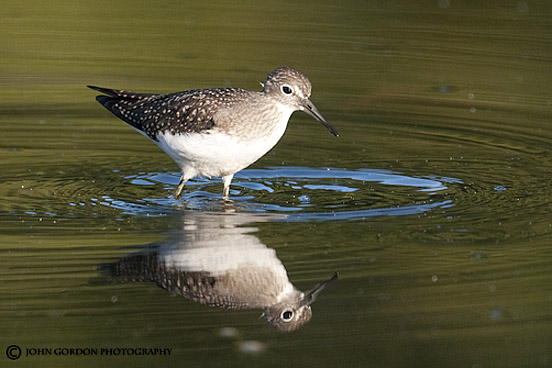Marked by song, two new bird species discovered in the PHL
The Camiguin Hawk Owl and the Cebu Hawk Owl
What made them unique are their songs. Two new owl species have been discovered in the Philippines, after bird scientists analyzed recordings of them singing in the wild.
"When we first heard the songs of both owls, we were amazed because they were so distinctly different that we realized they were new species," said zoologist Pamela Rasmussen, the lead author of the scientific paper announcing the findings.
"The owls don't learn their songs, which are genetically programmed in their DNA and are used to attract mates or defend their territory; so if they're very different, they must be new species," she added (listen here to Philippine Hawk Owls).
One of the new species, the Camiguin Hawk Owl, often sing in duet while facing each other, with a distinct growling tone instead of the high-pitched melodious song usually associated with birds. The other new species is the Cebu Hawk Owl, of which there has been only one specimen sighted.
Reputed to be a center of global biodiversity, the Philippines is home to nearly 200 endemic bird species, or birds found only in the archipelago.
"More than 15 years ago, we realized that new subspecies of Ninox hawk-owls existed in the Philippines," said Rasmussen. "But it wasn't until last year that we obtained enough recordings that we could confirm that they were not just subspecies, but two new species of owls.”
Philippine Hawk Owls are a type of "earless" owl that is common and endemic—or native—to various parts of the country. Earless owls are those without ear tufts, or feathers around their ears. The owls do have ears and use them to communicate and hear themselves.
www.gmanetwork.com/news/story/270490/scitech/science/marked-by-song-two-new-bird-species-discovered-in-the-ph
Bird recording
Rasmussen is the lead author of a paper on the Philippine Hawk Owl (Ninox philippensis) and its various subspecies. She is an assistant professor of zoology at Michigan State University and assistant curator of mammalogy and ornithology at the MSU Museum.
MSU said in a statement, "Announcing the finding of a single bird is rare enough. But the discovery of two new bird species in a single paper is so rare that Rasmussen and the other researchers couldn't recall the last time it happened.”
This study is featured in the current issue of Forktail, the Journal of Asian Ornithology.
One owl species, the Camiguin Hawk Owl, was found at the foot of Mt. Timpoong in northern Mindanao’s island-province of Camiguin. The study described the hawk owl as having a distinct bluish-grey to whitish eyes, and a recognizable and unique song.
“It is vocally highly distinct, normally giving a rapid, low-pitched duet, the two birds facing and leaning towards each other while very close together, with white throat puffed out and pulsating, wings drooped,” said the study.
"At night, it gives a long solo song that builds in intensity, with a distinctive low growling tone. Pairs of owls give short barking duets that start with a growl,” MSU said in a statement.
The other owl was the Cebu Hawk Owl, which was first thought to be extinct due to deforestation. The study described it as the “sole known specimen in existence,” which is closely related to the Mindoro Hawk Owl.
According to the Wild Bird Club of the Philippines, the country has "an astounding mix of more than 600 species of resident and migratory birds, of which almost 200 species are endemic."
A team of scientists and contributors helped to confirm the owls’ existence. The team included people from BirdLife International, the Oriental Bird Club, Philippines Biodiversity Conservation Foundation Inc., and Birdtour Asia, with additional support from National Geographic.
Philippine rainforests are also home to 102 species of amphibians, 179 mammals, 254 reptiles, 20,940 insects, and 15,000 kinds of plants. — BM/DVM/HS, GMA News
We welcome healthy discussions and friendly debate! Please click Flag to alert us of a comment that may be abusive or threatening. Read our full comment policy here.
http://www.gmanetwork.com/news/story/270490/scitech/science/marked-by-song-two-new-bird-species-discovered-in-the-phl
















